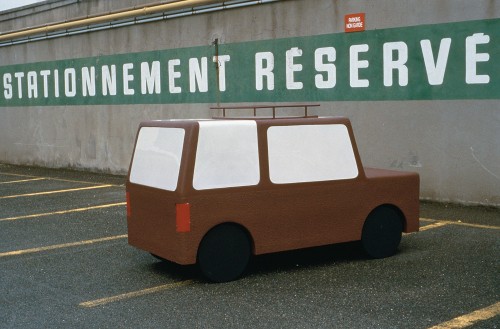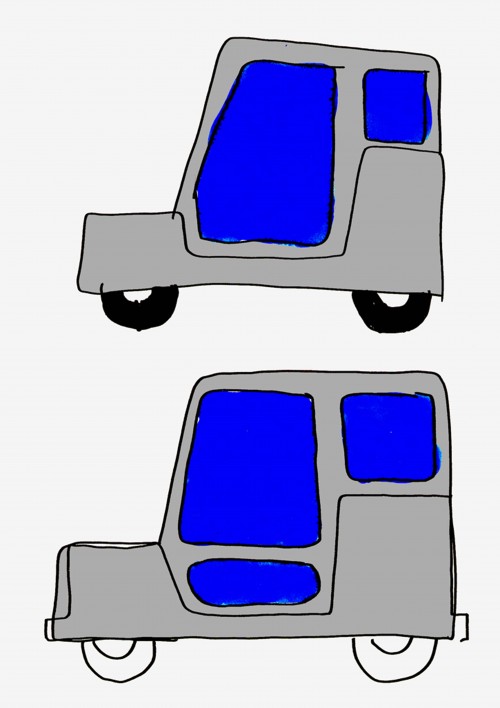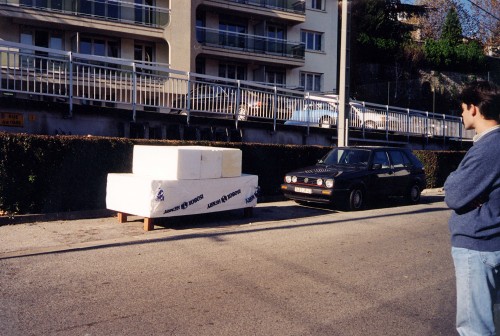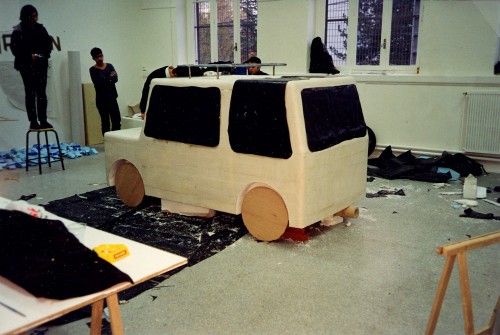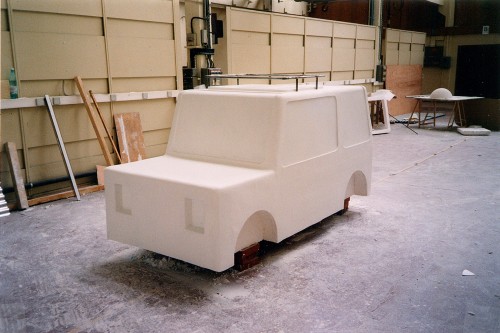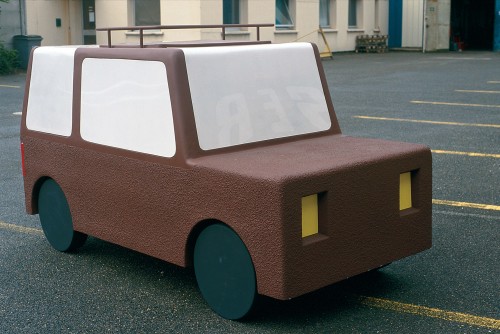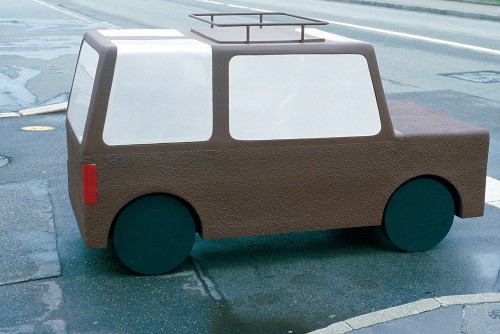Vroom Published in Azimuts n°15, p 112–113.
The car is a complex object from both the technical and construction point of view, calling for a high level of “technicity”, and is therefore designed by experts.
I found it interesting to look at this sort of object through laymen’s eyes, defining our own criteria and our own “modus operandi”. It was interesting to get to grips with one of the most emblematic products of industrial production, with the freedom to act outside the criteria laid down by the production system, set apart from the idea of a concrete application.
Starting from the premise of the car as part of the urban landscape, we pondered on how it interacts with this landscape and on the impact this could have upon its design. That led us to opt for a “weak design”, in other words a design which avoids aesthetic overloading, which does not systematically focus on improving the quality of form and expression of each object, but on its relationship with other objects and with the environment. Our approach has not been to view the car as a sculptural object, but as an object which is a building block in the landscape, inextricably part of the complex whole, whose design should be approached with restraint.
We soon came to lead our research using a lifesize model, but our intention was not to design a prototype car, but to materialise an idea of a car and to formulate directions for its potential design.
Pierre Charpin, 1997
Vroom
Azimuts n°15, p 112–113.
La voiture est un objet complexe sur le plan technique et constructif, nécessitant un haut niveau « d’ingénierisation » et dont la conception est assurée par des experts.
Je trouvais intéressants de nous confronter en qualité de non experts à un tel objet, en définissant nos propres critères, notre propre façon d’opérer ; intéressant d’aborder l’un des produits les plus emblématiques de la production industrielle, en agissant librement — en dehors des critères définis par le système productif -, détachés de l’idée d’une application concrète.
Considérant, au préalable, l’automobile en tant qu’élément du paysage urbain, nous nous sommes interrogés sur son articulation avec ce paysage, et sur l’incidence que cela pouvait avoir sur son design. Cela nous a conduit à opter pour un « design faible », c’est-à-dire un design qui évite la saturation esthétique, qui ne porte pas sur l’amélioration systématique de la qualité formelle et expressive de chaque objet, mais sur la recherche de l’articulation des objets entre eux, sur leur qualité relationnelle avec l’environnement.
Nous n’avons pas abordé la voiture comme un objet sculptural, mais comme un élément constitutif du paysage, s’inscrivant dans une globalité complexe et dont le design nécessitait d’être considéré avec retenue.
Si nous avons très vite mené notre recherche à partir d’une maquette grandeur réelle, notre propos n’était pas de concevoir un modèle de voiture, mais celui de matérialiser une idée de voiture, de formuler des indications pour son possible design.
Pierre Charpin, 1997
